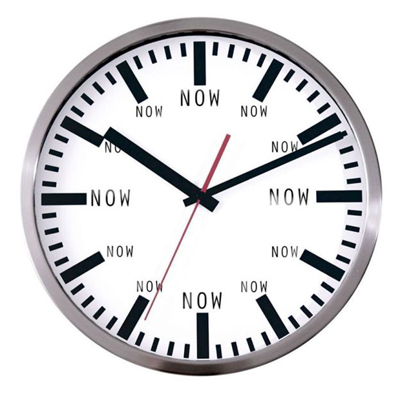
A cosmic self-referential paradox, our reckoning of time can be used to prove that it’s an illusion. Is this testament to our enduring capacity for self delusion or an example of humanity’s uncanny knack for cracking the underlying code of existence, or both?
What allows all this mental reckoning is mathematics, alongside its companion literate civilization. As Marshall McLuhan, the visionary professor who coined the phrase “the medium is the message” noted some 50 years ago, the development of the medium of literacy transformed western society and thought into it’s own image.
Specifically, McLuhan’s premise pertains to the way the medium of a phonetic alphabet adaptable to any language imparts structure and character to thought and changes the nature of culture that emerges from that thought. Written language extends this structure and through the technological medium of moveable type and the printing press its duplication, regularity and linearity deeply influenced our way of thinking, problem-solving and actions. This in turn transformed human society, which for almost all of its lengthy history lacked literacy and relied instead on an oral tradition for the transmission of culture and survival.
In the oral tradition, language was used as a magical, sacred tool of mystical character. Vowels, those phonetic elements which impart the essence of word-content, were a closely guarded secret. Thus in written Hebrew, vowel sounds are hidden and must be learned through hearing. Ancient Celts used elaborate cyphers to disguise vowels through which it was believed the name of God could be revealed. Thus the illiterate individual was tightly bound to society and clan, the only available source of wisdom.
With the printing press knowledge of the word became available to the masses, and contemporary forms of social individualism emerged in tandem. With books, one no longer required whispered wisdom to gain knowledge; the structure of society was radically altered by printing technology and our notions of time were similarly altered. The repeatable, regular and linear quality of the printed page became incorporated into and propelled acceptance of the technology of time, which also become regular and linear. Seconds, minutes and hours, when universally embraced, replaced a flowing timelessness marked only by seasonal, tidal and reproductive patterns.
Once discovered, numbers originally held a sacredness akin to that of vowels. Within numbers and geometry, the Pythagoreans believed essential truth could be found. They stumbled upon what they felt were symbols of perfection which, through their manipulation, revealed the otherwise invisible workings of the divine. As mathematics progressed in concert with the written word and eventually printed books, it indeed became possessed of essential truth, either native or imbued; Einstein and the subsequent calculations of quantum physics seem to accurately describe the otherwise unfathomable workings of space and time.
This brings us back to time’s paradox. Without literate culture’s habitual acceptance of time being repeatable, regular and linear, time’s duration would be fabulously subjective, and largely a matter of simply designating “now” or “then.” Past, present and future (and neither past nor future exist in the present) depend on the establishment of tense, a product of the medium of language. Some non-literate cultures exist without such distinctions, all and everything regarded as the present. We too each exist in our own subjective bubble of “now” despite our modern widespread reliance on the powerfully seductive medium of the clock.